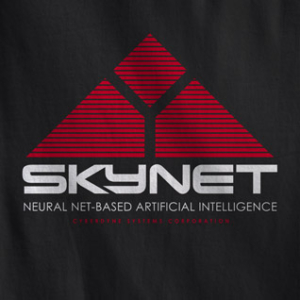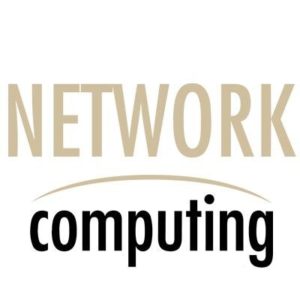 Blockchain is a distributed digital ledger technology in which blocks of transaction records can be added and viewed—but can’t be deleted or changed without detection. Here’s where the name comes from: a blockchain is an ever-growing sequential chain of transaction records, clumped together into blocks. There’s no central repository of the chain, which is replicated in each participant’s blockchain node, and that’s what makes the technology so powerful. Yes, blockchain was originally developed to underpin Bitcoin and is essential to the trust required for users to trade digital currencies, but that is only the beginning of its potential.
Blockchain is a distributed digital ledger technology in which blocks of transaction records can be added and viewed—but can’t be deleted or changed without detection. Here’s where the name comes from: a blockchain is an ever-growing sequential chain of transaction records, clumped together into blocks. There’s no central repository of the chain, which is replicated in each participant’s blockchain node, and that’s what makes the technology so powerful. Yes, blockchain was originally developed to underpin Bitcoin and is essential to the trust required for users to trade digital currencies, but that is only the beginning of its potential.
Blockchain neatly solves the problem of ensuring the validity of all kinds of digital records. What’s more, blockchain can be used for public transactions as well as for private business, inside a company or within an industry group. “Blockchain lets you conduct transactions securely without requiring an intermediary, and records are secure and immutable,” says Mark Rakhmilevich, product management director at Oracle. “It also can eliminate offline reconciliations that can take hours, days, or even weeks.”
That’s the power of blockchain: an immutable digital ledger for recording transactions. It can be used to power anonymous digital currencies—or farm-to-table vegetable tracking, business contracts, contractor licensing, real estate transfers, digital identity management, and financial transactions between companies or even within a single company.
“Blockchain doesn’t have to just be used for accounting ledgers,” says Rakhmilevich. “It can store any data, and you can use programmable smart contracts to evaluate and operate on this data. It provides nonrepudiation through digitally signed transactions, and the stored results are tamper proof. Because the ledger is replicated, there is no single source of failure, and no insider threat within a single organization can impact its integrity.”
It’s All About Distributed Ledgers
Several simple concepts underpin any blockchain system. The first is the block, which is a batch of one or more transactions, grouped together and hashed. The hashing process produces an error-checking and tamper-resistant code that will let anyone viewing the block see if it has been altered. The block also contains the hash of the previous block, which ties them together in a chain. The backward hashing makes it extremely difficult for anyone to modify a single block without detection.
A chain contains collections of blocks, which are stored on decentralized, distributed servers. The more the better, with every server containing the same set of blocks and the latest values of information, such as account balances. Multiple transactions are handled within a single block using an algorithm called a Merkle tree, or hash tree, which provides fault and fraud tolerance: if a server goes down, or if a block or chain is corrupted, the missing data can be reconstructed by polling other servers’ chains.
And while the chain itself should be open for validation by any participant, some chains can be implemented with some form of access control to limit viewing of specific data fields. That way, participants can view relevant data, but not everything in the chain. A customer might be able to verify that a contractor has a valid business license and see the firm’s registered address and list of complaints—but not see the names of other customers. The state licensing board, on the other hand, may be allowed to access the customer list or see which jobs are currently in progress.
When originally conceived, blockchain had a narrow set of protocols. They were designed to govern the creation of blocks, the grouping of hashes into the Merkle tree, the viewing of data encapsulated into the chain, and the validation that data has not been corrupted or tampered with. Over time, creators of blockchain applications (such as the many competing digital currencies) innovated and created their own protocols—which, due to their independent evolutionary processes, weren’t necessarily interoperable. By contrast, the success of general-purpose blockchain services, which might encompass computing services from many technology, government, and business players, created the need for industry standards—such as Hyperledger, a Linux Foundation project.
Read more in my feature article in Oracle Magazine, March/April 2018, “It’s All About Trust.”







 Oracle Database is the world’s most popular enterprise database. This year’s addition of autonomous operating capabilities to the cloud version of Oracle Database is one of the most important advances in the database’s history. What does it mean for a database to be “autonomous?” Let’s look under the covers of
Oracle Database is the world’s most popular enterprise database. This year’s addition of autonomous operating capabilities to the cloud version of Oracle Database is one of the most important advances in the database’s history. What does it mean for a database to be “autonomous?” Let’s look under the covers of  At too many government agencies and companies, the security mindset, even though it’s never spoken, is that “We’re not a prime target, our data isn’t super-sensitive.” Wrong. The reality is that every piece of personal data adds to the picture that potential criminals or state-sponsored actors are painting of individuals.
At too many government agencies and companies, the security mindset, even though it’s never spoken, is that “We’re not a prime target, our data isn’t super-sensitive.” Wrong. The reality is that every piece of personal data adds to the picture that potential criminals or state-sponsored actors are painting of individuals. Blockchain and the cloud go together like organic macaroni and cheese. What’s the connection? Choosy shoppers would like to know that their organic food is tracked from farm to shelf, to make sure they’re getting what’s promised on the label. Blockchain provides an immutable ledger perfect for tracking cheese, for example, as it goes from dairy to cheesemaker to distributor to grocer.
Blockchain and the cloud go together like organic macaroni and cheese. What’s the connection? Choosy shoppers would like to know that their organic food is tracked from farm to shelf, to make sure they’re getting what’s promised on the label. Blockchain provides an immutable ledger perfect for tracking cheese, for example, as it goes from dairy to cheesemaker to distributor to grocer. If you saw the 2013 Sandra Bullock-George Clooney science-fiction movie Gravity, then you know about the silent but deadly damage that even a small object can do if it hits something like the Hubble telescope, a satellite, or even the International Space Station as it hurtles through space. If you didn’t see Gravity, a non-spoiler, one-word summary would be “disaster.” Given the thousands of satellites and pieces of man-made debris circling our planet, plus new, emerging threats from potentially hostile satellites, you don’t need to be a rocket scientist to know that it’s important to keep track of what’s around you up there.
If you saw the 2013 Sandra Bullock-George Clooney science-fiction movie Gravity, then you know about the silent but deadly damage that even a small object can do if it hits something like the Hubble telescope, a satellite, or even the International Space Station as it hurtles through space. If you didn’t see Gravity, a non-spoiler, one-word summary would be “disaster.” Given the thousands of satellites and pieces of man-made debris circling our planet, plus new, emerging threats from potentially hostile satellites, you don’t need to be a rocket scientist to know that it’s important to keep track of what’s around you up there.














 Go ahead, blame the user. You can’t expect end users to protect their Internet of Things devices from hacks or breaches. They can’t. They won’t. Security must be baked in. Security must be totally automatic. And security shouldn’t allow end users to mess anything up, especially if the device has some sort of Web browser.
Go ahead, blame the user. You can’t expect end users to protect their Internet of Things devices from hacks or breaches. They can’t. They won’t. Security must be baked in. Security must be totally automatic. And security shouldn’t allow end users to mess anything up, especially if the device has some sort of Web browser. Blockchain is a distributed digital ledger technology in which blocks of transaction records can be added and viewed—but can’t be deleted or changed without detection. Here’s where the name comes from: a blockchain is an ever-growing sequential chain of transaction records, clumped together into blocks. There’s no central repository of the chain, which is replicated in each participant’s blockchain node, and that’s what makes the technology so powerful. Yes, blockchain was originally developed to underpin Bitcoin and is essential to the trust required for users to trade digital currencies, but that is only the beginning of its potential.
Blockchain is a distributed digital ledger technology in which blocks of transaction records can be added and viewed—but can’t be deleted or changed without detection. Here’s where the name comes from: a blockchain is an ever-growing sequential chain of transaction records, clumped together into blocks. There’s no central repository of the chain, which is replicated in each participant’s blockchain node, and that’s what makes the technology so powerful. Yes, blockchain was originally developed to underpin Bitcoin and is essential to the trust required for users to trade digital currencies, but that is only the beginning of its potential. Far too many companies fail to learn anything from security breaches. According to CyberArk, cyber-security inertia is putting organizations at risk. Nearly half — 46% — of enterprises say their security strategy rarely changes substantially, even after a cyberattack.
Far too many companies fail to learn anything from security breaches. According to CyberArk, cyber-security inertia is putting organizations at risk. Nearly half — 46% — of enterprises say their security strategy rarely changes substantially, even after a cyberattack. Spectre and Meltdown are two separate computer security problems. They are often lumped together because they were revealed around the same time – and both exploit vulnerabilities in many modern microprocessors. The website
Spectre and Meltdown are two separate computer security problems. They are often lumped together because they were revealed around the same time – and both exploit vulnerabilities in many modern microprocessors. The website 